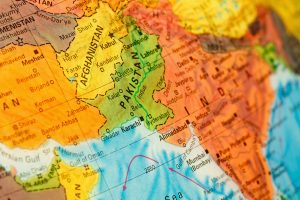In recent weeks, Pakistan and the Afghan Taliban have engaged in the most serious military clashes between the two neighbors in several years.
Qatar and Turkiye mediated a ceasefire on October 19, bringing an end to the hostilities that have killed dozens of people and wounded hundreds. Both countries have agreed to respect one another’s territorial integrity. They will meet again in Istanbul later this week to discuss the next steps.
Yet, the situation remains tense, as the underlying causes of the conflict have yet to be resolved.
At the heart of the conflict is Islamabad’s claim the Afghan Taliban have been harboring and aiding the Pakistani Taliban (also known as Tehreek-e-Taliban Pakistan, or TTP). The TTP’s goal is to change Pakistan along the lines of the Taliban’s extremist Islamic rule in Afghanistan.
The Taliban government has denied Islamabad’s accusations.
Since the Taliban’s return to power in Afghanistan in mid-2021, following the retreat of the United States and its allies, they have once again turned the country into a nest of various terrorist groups. This includes, most importantly, the TTP.
The Taliban have accommodated hundreds of TTP fighters (some with their families) in Afghanistan and boosted the TTP’s combat capabilities, so the group can now engage in deadlier cross-border operations in Pakistan. According to the United Nations, the TTP has even accessed some of the $7 billion worth of weapons left behind by the United States and allied forces.
As the TTP has increased its operations in Pakistan, Islamabad has become more intolerant of the Afghan Taliban government.
It has also grown very concerned about Kabul’s ties with Pakistan’s regional rival, India. The Taliban’s acting foreign minister, Amir Khan Mutaqqi, recently visited New Delhi, where he was warmly welcomed by India’s government. Pakistan has traditionally viewed Afghanistan as being part of its backyard of influence.
Pakistan’s military and powerful military intelligence (the Inter-Services Intelligence, or ISI) have sought to counter the threat from Afghanistan by pursuing a strategy of deterrence and punishment.
This has included deporting tens and thousands of refugees back to Afghanistan, most of whom had fled the Taliban’s repressive, discriminatory, and misogynist rule. Islamabad has also occasionally bombed targets in Afghanistan.
The situation escalated sharply this month after the TTP launched attacks on Pakistan security forces, including a suicide bombing on a police training school, killing 23 people.
Pakistan responded by striking what it claimed to be TTP sites in Kabul and Kandahar, where the Taliban’s elusive supreme leader Hibatullah Akhunzadeh reportedly lives.
In retaliation, Taliban forces attacked Pakistani posts along the disputed 2,600-kilometer Afghanistan-Pakistan border (also known as the Durand Line), resulting in considerable military and civilian casualties on both sides.
Pakistan also blocked Afghan transit routes, striking a serious blow to the already devastated Afghan economy. Although the Taliban rerouted their goods through Iranian ports, this is not as financially viable or a proper substitute for Pakistan’s transit routes.
The two sides agreed to a 48-hour ceasefire last week, but it was immediately broken when Pakistan launched more airstrikes that Kabul said killed several cricket players. Islamabad denies civilians were killed.
In the final analysis, Islamabad cannot blame anyone but itself for the challenges it faces from the Afghan Taliban. Pakistan itself nurtured and supported the Taliban as a terrorist group for some three decades.
As Pakistani Defense Minister Kawaja Asif recently acknowledged, Islamabad long pursued a double-edged foreign policy. It has publicly opposed terrorism, while using extremist groups, like the Afghan Taliban and their affiliates, to gain regional influence in its competition with India.
Thanks to this policy, the Afghan Taliban were able to seize power from the mid-1990s until 2001, when al-Qaida’s September 11 attacks on the United States led to the fall of the regime. The Taliban, again with assistance from Pakistan, subsequently mounted an effective resistance to the two-decade-long U.S.-led intervention in Afghanistan. The Taliban were able to regain power in 2021, to the detriment of both Afghanistan and Pakistan.
It is important to note this conflict is not between Pakistan and the people of Afghanistan, who are languishing under the Taliban’s draconian rule. Rather, this is a conflict between Pakistan and the Taliban government – a patron-client relationship that has now backfired.
The Taliban’s rule in Afghanistan is medievalist and fragile. The regime needs to be ousted, but this is a matter for the people of Afghanistan, not Pakistan. Foreign intervention in Afghanistan has not worked in the past.
Selfless assistance from the international community is needed to empower the people of Afghanistan to chart their own future. A combination of internal resistance to the Afghan Taliban and external pressure on the group is the best way forward.
This article was originally published on The Conversation. Read the original article. ![]()





























